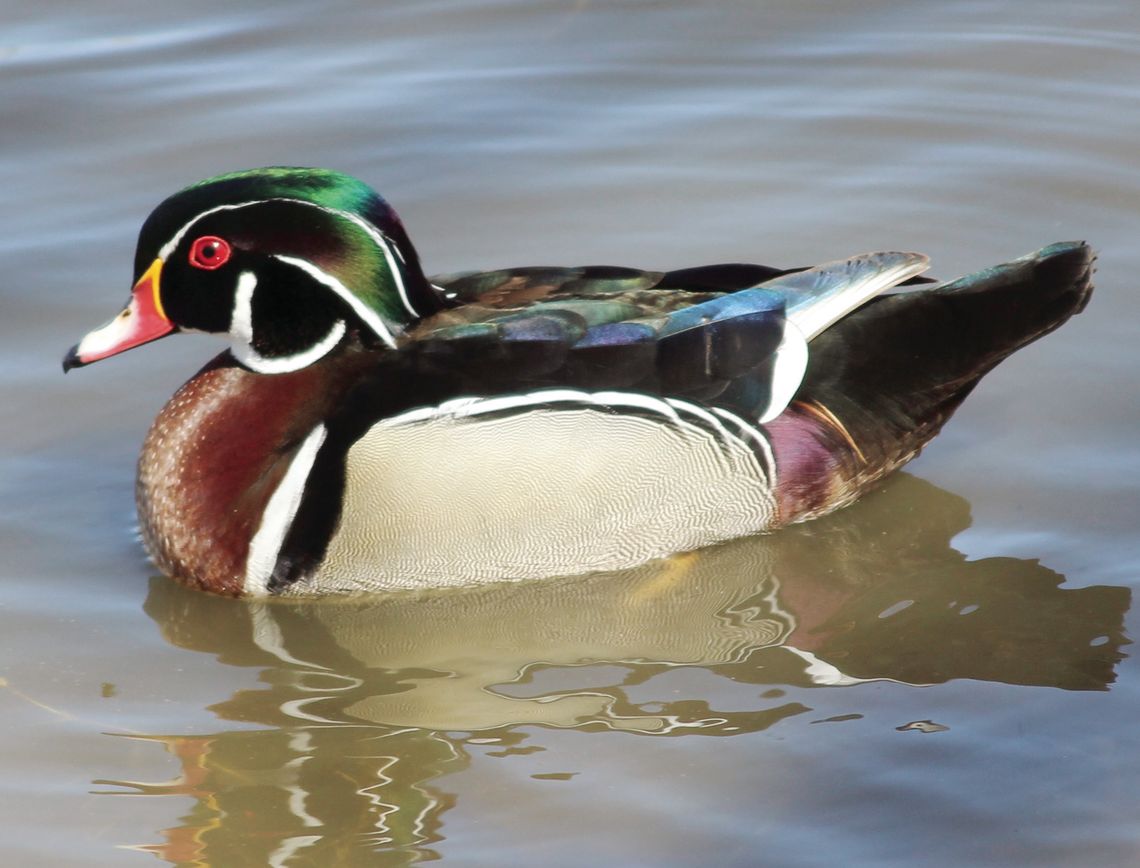There have been a few times in my life that an observation of an animal caused me to do a severe “double-take”. One of those times was from an animal so beautiful that even the Royal Canadian Mint created two coins to commemorate it. That particular animal is a waterfowl species known as the Wood Duck.
The Wood Duck (Aix sponsa) is a partial migratory species where most individuals spend the summer months primarily along the northern boundary of the US in the Midwest, Northeast, and Pacific Northwest.
During the colder winter months, these individuals migrate to warmer climate here in Texas where they reside from central Texas westward through the Trans-Pecos. There are populations that are permanent residents from the Atlantic Seaboard (Carolinas to Florida) westward to east Texas. Regardless of their migratory status, this species can be observed in swamps, tree-sheltered ponds and even city parks. They generally shy away from large bodies of water such lakes and large rivers.
The drake (male) Wood Duck is certainly among the most beautiful of all waterfowl with his iridescent black head that is adorned with several white lines on the face and a long-pointed crest. The eyes are bright red, and the bill is multicolored with white, yellow, black and red. The breast area is a light purple coloration with small white spots while the back is colored similarly to the head. The sides are yellow with black dashes and the flanks are colored like the breast, only without the white spots.
This species of duck is sexually dimorphic as the females are not nearly as showy with their brownish breast, back and flanks and their gray head with a white teardrop behind the dark eye. The bill of the female is dark, and they have a white chin. Some females have a small blue patch on the middle of the wings.
The body size of the Wood Duck has been recorded up to a length of 20 inches (about 2/3 the size of the famous Mallard) with a wingspan of about 10 inches more.
Wood Ducks are known as dabbling ducks, meaning they do not fully submerge in the water to obtain their meals. They feed primarily on vegetation, berries, and seeds, but being omnivorous, they will also occasionally feed on insects, snails, and small amphibians.
This beautiful duck is one of the very few species that utilizes trees to perch and nest in. This variety of aquatic bird prefers to live in very small colonies, although during the breeding season they choose to nest solitarily.
This nest is generally constructed by the female in the cavity of a dead tree, although they will also make use of appropriately sized nest boxes placed 15 feet or so above ground.
Wood Ducks are a monogamous species that breed during the summer months and lay between nine and 15 2-inch long white, spherical eggs that are incubated by the female.
This incubation period is generally around a month in duration, after which time the almost self-reliant young will leave the nest.
They can feed themselves but are protected by the mother. Hatchlings begin to take flight as early as two months of age. This species typically only produces one brood annually but is it the only species of North American duck that will occasionally produce two broods in the same calendar year.
Studies have shown that the population dynamics of this species, while suffering a decline in the past, is now fairly stable in many areas. Although they can often be seen in open areas such as public parks, this species tends to be a little on the cautious side, taking immediate flight from the water whenever a perceived predator is nearby.





















